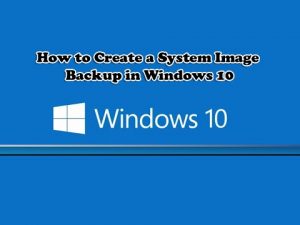Recently did some Spring house cleaning on my computer the other day, furiously sweeping away the detritus of years of web browsing, software downloads, photo editing, grocery shopping lists, and other geeky pursuits. My hard drive was clean, shiny, and well organized. And then I asked myself ‘How can I keep it this way?’ Read on for the answer to that question, as well as some tips on scrubbing and optimizing your own hard drive…
Clean, Organize and Preserve Your Perfect Hard Drive
The first step in my spring cleaning was to run a deep scan for malware, using both Avast and MalwareBytes Anti-Malware. Fortunately, both of those scans came up clean. Why a “deep scan,” you may ask? That’s because the default behavior of computer security tools is to examine only the most common malware hiding places.
Next, I optimized my system with help from Advanced System Care Ultimate 11, a trusted name that’s getting more ludicrous with each “new, improved” generation. (If you prefer understated numbers, this is version 11.0.1) CCleaner and Privazer are also good options for this optimizing task.
I then poked around for unwanted and duplicate files, and got rid of those. I even deleted windows.old, the file folder that contained my old Windows 7 installation. There’s no going back for me now; it’s Windows 10 or Linux, and I’m not ready to go full Linux. By the way: do not try to delete windows.old with the standard “delete” button, you will find an endless supply of “you do not have permission to delete” blockades in your path. Here is the proper way to erase the windows.old folder
Type “disk cleanup” in Windows’ search box and open that app. Select your Windows 10 drive to clean up and click OK. In the lower-left corner of the screen, click the “clean up system files” button. The refreshed list of files that can be deleted will then include old Windows installation files. You’ll find they can amount to 6 or 8 GB of wasted space, so check the box next to such things and let Cleanup get rid of them.
After all that, I organized all my data files in neat, clearly labeled folder trees. Finally, my PC’s hard drive was a model of tidiness and efficiency! Everything ran faster; not just a little faster but “holy cow, what have I been missing!” faster. And then I had a sad thought.
“Sigh. If only it would stay this way,” I mused, remembering my high school chemistry lesson on the Second Law of Thermodynamics. In a nutshell, it states that chaos will inevitably creep in with every passing second. All systems tend to go from order to disorder. In the world of your computer, this happens as a result of web browsing, installing, using and removing software, and keeping your operating system current with updates. There are ill-behaved apps that make changes to the registry and leave unneeded files laying around. Malware is constantly looking for new attack vectors. Power glitches may cause unexpected shutdowns that damage open files. Hardware failures (sometimes subtle) are not uncommon. One very smart friend of mine who designs electronic equipment tells me that even cosmic rays can twiddle the bits in your files, causing data corruption.
A Forehead Smack
All of that is what keeps computer software developers in business. But still, if only I could always have this perfect hard drive… Then it hit me… “Hey, wait a minute, I CAN keep my hard drive perfect forever!” I suddenly realized in one of those forehead-smacking “Eureka!” moments that consisted of two words: SYSTEM IMAGE!
A system image file is a type of backup, and can be thought of like a ZIP file, which is a single file that contains the contents of multiple files. A system image file is also like a bucket of sand. Copies of EVERY file on your hard drive, including hidden system files you never see, are simply poured bit by bit into the system image file. You cannot (easily) retrieve a specific file from a system image file. But you can have an exact duplicate of your perfectly organized and optimized hard drive, forever, and you can restore your hard drive to exactly that perfect state at any time.
Of course, a system image file does not contain any new files added to your hard drive after the system image was created, nor does it reflect any future modifications to the data it contains.
A system image file is a much better place from which to start re-installing Windows than your older Windows installation disc or even the latest version of Windows 10 installed by the Microsoft Media Creation Tool. That’s because your system image file is more current than the one on the Windows installation disc, and more customized for you than the one created by the Media Creation Tool.
A huge plus is that your system image file includes all of your application software and personal data! When a system image file is restored to your hard drive, everything will be there and work just as it did before whatever calamity forced you to restore from a system image file.
Ready to Make a System Image?
I hope you are now eager, or at least willing, to create a system image file. Here is what we are going to do:
Find a place to put our system image file. As a temporary test case, you can store the system image file on the same hard drive as the source drive, but if that drive fails then your system image goes away along with the source. A second internal hard drive, or an external hard drive is the best option, but a USB flash drive of sufficient capacity will also do. I do not recommend a series of DVD discs; you’ll be stuck at the keyboard, swapping and labeling and trying to keep discs in order for an hour or more. The other options let you go watch a ball game while the system image file is created in one unattended operation.
Find and launch the “system image creation” app. For some reason, Microsoft hides it; typing “system image” in Windows’ search box will not produce the app you need. So open Control Panel; in the top-left corner, in the “System and Security” section, you will see “Backup and Restore (Windows 7).” Click on that link and then on “Create a system image” on the next page. (Yes, the Windows 10 system image app is the same one used since the feature was introduced in Windows 7.) If you’re still using Windows 7, you’ll find the “Create a system image” link by clicking “Back up your computer” on the Control Panel screen.
Follow the app’s prompts to start the creation of a system image file. Mine ended up being about 60 GB and the whole process took a bit over an hour. Your time will depend on how much data you have, the speed of your source and target drives and the connection between them, and whether you try to get work done while the system image file is being created (not recommended).
Let me pause here for a moment and mention that you can also create a system image file using third-party backup utilities. I use Macrium Reflect, but there are other tools for this task, including EaseUS Todo Backup Free and AOMEI Backupper.
When the system image has been created, the app will ask if you want to create a restore disk; the correct answer is “Yes!” Without a restore disk you cannot restore the system image file to your hard drive. So make one.
The restore disk is bootable, which is handy if your primary boot disk has blown up. It’s also necessary because a system image cannot be copied to a hard drive that is in use by an operating system or other software. If your primary boot drive cannot boot, then your system’s BIOS will check other drives to see if it can boot from one of them. If your primary boot drive is fine and you’re just testing system image backup/restore, you need to make sure the BIOS checks the drive that will hold your restore disk before your primary boot drive; otherwise, Windows will boot instead of the utility on the restore disk. Consult your PC’s user manual for “setting boot order” of drives in your PC.
Restoring your perfect hard drive from its system image copy takes just as long as creating the copy did. When the process is all over, you will feel a certain virtuous satisfaction that comes with a Spring cleaning job well done. You will also have a “better than new” system, lively and fun to work on. I recommend making a fresh system image file once a month, so if you need to restore from it there won’t be too many missing changes to worry about. If you’re adding, updating and deleting files frequently, consider a weekly image backup.
Have a great week
ZI Staff
